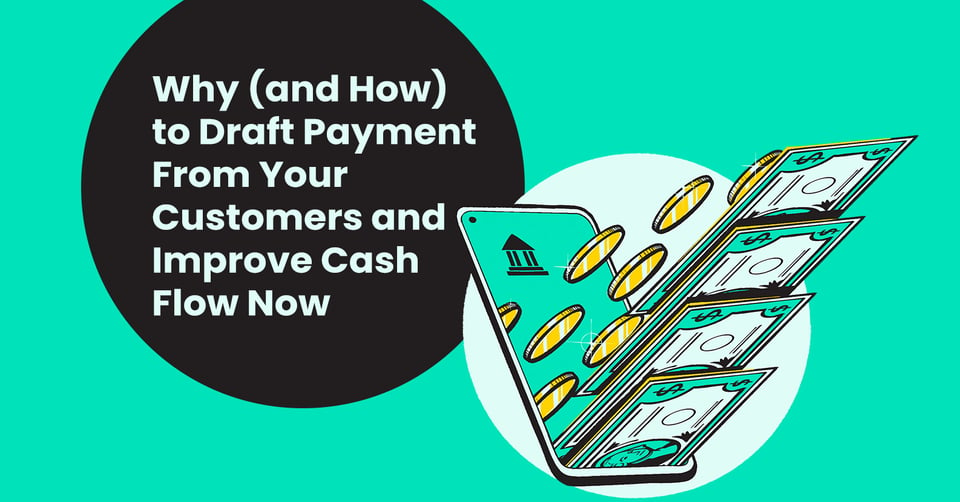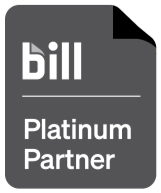
Think about your back-office finance operation for a moment. If you could eliminate two time-consuming administrative tasks while also clearing cash-flow bottlenecks, would you?
Autopayments do this. When you automate invoicing and then draft payment straight from your customers’ bank accounts, you’re enjoying a particular type of autopayment called an autodraft. An automated draft payment is guaranteed by the issuing bank, unlike a check or credit card transaction. These electronic debits are processed through the Automated Clearing House (ACH).
This particular automation is gaining traction among business leaders. Analysts at Ernst & Young have found that at commercial banks, ACH was growing faster than any other cash management solution they provided.
Source: Ernst & Young’s 2020 Cash Management Services Survey
Your business has a lot to gain by moving to an autodraft billing and collection process. We caught up with Ignite Spot’s office manager, Robyn Scheib, to learn exactly how the method can benefit your business. She also explained how to find and implement the best autodrafting solution for you and your customers.
Reasons to draft payment from clients’ banks automatically — and regularly
We’ve seen the explosion of electronic and automated money movements. But to jump on the bandwagon (or to convince yourself to upgrade your own processes), you’ll need specifics. Here are some of the benefits you can expect when you draft payments regularly.
Immediate wins
First, you’ll save time.
“The entrepreneurs and businesses we serve — you know, they are juggling so many responsibilities. So that's the first crucial thing that they get out of this — they get their time back.”
-Robyn Scheib, Office Manager of Ignite Spot
One solutions team found that you could recover 50% of the time spent on work previously done manually.
Another benefit is immediate compliance. Unlike repeating “card on file” charges, there’s no need to worry about PCI compliance for customers on auto-draft. Remember, draft payment funds come straight from your customers’ accounts — not a payment card or a creditor.
Along the same lines, regular ACH draft payment transactions are safer for you. Since it’s account-to-account, there are no steps in between. The Wall Street Journal reports that in 2018, check fraud cost the U.S. banking system $1.8 billion, and debit card fraud accounted for another $1.2 billion lost. The publication goes on to say that check fraud is the fastest-growing type of fraudulent loss.
Recurring draft payment transactions are safer in another way, too: These days, paperless exchanges help mitigate the spread of known (and unknown) pathogens, something everyone can appreciate.
It’s likely you’ll also save money. ACH fees are usually lower than credit card processing fees. Typically, a draft payment is $.20-$1.50 per transaction instead of the hefty percentage (often 2.9+%) taken by credit cards. For most business types, autodraft ends up being far less expensive.
Perhaps most important, your cash flow will improve. When you automatically draft payment, you get paid faster than when you use checks. This “immediate win” lends itself to more sustainable, long-term benefits.
5 Long-term, strategic benefits
1. More Financial Options
First, healthy cash flow gives you more financial options. With cash coming in regularly, you can plan more confidently. You’ll have more reliable predictions for forecasting and more accurate reporting for decision-making. This foresight lets you be flexible and agile: With cash streaming in, you can change tactics and even return to your original plan without falling behind or “paying double” for missteps. An example of these options is independence from debt and outside funding — itself a benefit.
2. Happier Customers
The next reason to start or upgrade your automatic draft payment process is that it produces happier customers. Autopayments are more convenient for clients. They’ll no longer need to remember to pay, or — awkward — field calls from your accounts receivable (AR) team.
3. More Productive Teams
You’ll also enjoy a happier workforce. Experts from Iron Mountain report in The Boston Globe that workers whose companies go paperless enjoy more efficient productivity, flexibility, and environmental sustainability. At the same time, they reduce human error and menial busywork.
4. Beat the Competition
Long term, they also give you a competitive advantage. Think about it: New startups entering your space won’t be launching their operations using checks, cash, or even manual credit card swipes. Compete in your space by evolving now — before these contenders arrive.
5. Reduce Bad Debts
Finally, draft payments from customers on a regular basis and you could reduce your rate of bad debts. Proper billing and collection processes keep receivables from progressing and becoming uncollectable debts.
All these benefits add up to a new ability to scale up, “and isn’t that what every business owner ultimately wants?” Robyn asks. “Isn’t that why we look to the small things — to affect the big things?”
A recent survey conducted by MasterCard revealed that paper checks were still the number one way businesses sent and received payments.
Source: MasterCard, The B2B Payments Tipping Point
Experts at CPA Practice Advisor put the estimate even higher, reporting that half of all businesses still primarily use paper checks.
Is your business one of them? If so, switch and reap the rewards.
How to set up automatic draft payment and processing systems
It’s tempting to start shopping for a solution to upgrade your invoicing and payment processing. But first, it’s time to overhaul your back-office procedures.
Prepare your workflows and people for the change
Start by appointing someone to completely own this change. If you’re just starting out with automation, a person must create the standard operating procedure (SOP) documents to systemize the work and train others. Or, if you’re upgrading, someone must overhaul the current SOPs and manage the upcoming change.
This person’s job is to assess your business model, industry, and current practices. Then, they’ll draft a proposed “new method” of draft payment administration. This proposal will include who is involved (and what their role and responsibilities are) and when in the customer relationship each event will take place. Finally, they’ll present this new plan to the team and ask for input before implementing the new procedure.
You can enlist an employee for this role, or you can outsource the work to a team that has done it before. Ignite Spot has helped upgrade the invoicing and draft payment processes for many customers in the past. We can share unique-to-you perspectives from experience, helping you capitalize on opportunities and sidestep pitfalls.
One example of this experience is a lesson learned early on: Prioritize the customer’s convenience over your own.
“Making things easier on the customer makes things easier on you,” Robyn says, smiling. “Trust me.”
In practice, Robyn says this means prioritizing the payment info collection step. Position it as early on in your customer relationship as possible.
“The earlier we collect payment and bank information for drafting, the better the overall customer relationship has been — consistently over time.”
Narrow down the options
There are so many AR automation tools today that you may be overwhelmed with choices at first. Here’s how to quickly narrow down the options and find your fit.
Remember, your new processes (established above) dictate what technology you’re looking for — not the other way around. Find a solution that fits those processes. Rule out any contenders that force you to adopt their processes, thus deprioritizing your customer.
Plan to purchase two solutions: one auto-invoicing and one autopayment processing. Auto-drafting requires the combination of these two processes. Many solutions today offer both in one, but in some cases, it still makes sense to subscribe to two separate services and integrate them to work together. Almost all of today’s newer tools integrate with one another, but occasionally, one doesn’t fit, or it creates clunky redundancies. Avoid those.
Another way to narrow down the options is to search for sector-specific tools. There are auto-invoicing and auto-payment processing solutions for every industry. There’s also an option for every business size and maturity level.
For example, most commercial banks offer an ACH draft payment solution. “The bank’s own tool may be perfect for businesses just starting out,” Robyn says. “It’s what we used at Ignite Spot — until we outgrew that solution.” Robyn’s team began feeling that the technology was a bit expensive for the basic features. They also noticed it didn’t integrate well with other tools and wasn’t able to scale with Ignite Spot’s growth. So they upgraded as they matured.
There’s also an auto-invoicing and draft payment tool for every business model. Square’s payment processing is good for small e-commerce stores, local boutiques, gyms, or bakeries. A B2B service provider, on the other hand, will want something more robust and flexible.
To familiarize yourself with some of the features of the most popular tools, check out these:
Adjust and refine as you go
Many of these tools offer free trials of their premium plans, so give your choices a test-drive before committing. This experimentation can be unnerving with actual customers, so set up dummy accounts for this purpose if needed.Collect feedback from your team members to learn what works, what doesn’t, and what you can continue improving to make the payment experience even better for your customers in the long run.
Work draft payments into your overall digital transformation plan
AR digitization should be one facet of a greater evolution in your business. Going paperless and automating manual work is an ever-evolving job you must stay on top of to compete. Remember: Many of today’s streamlining tools were once considered novel and flashy. Now, they’re table stakes. Especially those that eliminate friction and improve cash flow.
To help you navigate your AR evolution, call the trusted advisors at Ignite Spot. In your first (free) consultation, we’ll assess your finance department’s needs and goals, and we’ll apply what we’ve learned to help you achieve those goals.












.png)




